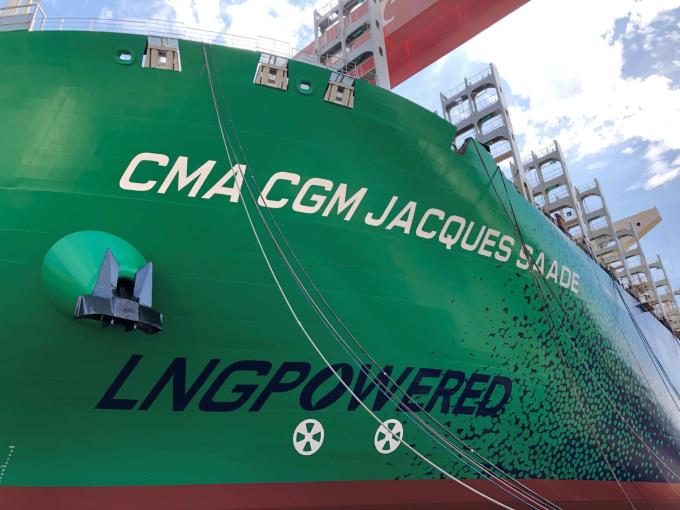Container spot rates have peaked as all major trades see prices fall
There was more evidence in this week’s container port freight markets that peak prices on ...
TFII: SOLID AS USUALMAERSK: WEAKENINGF: FALLING OFF A CLIFFAAPL: 'BOTTLENECK IN MAINLAND CHINA'AAPL: CHINA TRENDSDHL: GROWTH CAPEXR: ANOTHER SOLID DELIVERYMFT: HERE COMES THE FALLDSV: LOOK AT SCHENKER PERFORMANCEUPS: A WAVE OF DOWNGRADES DSV: BARGAIN BINKNX: EARNINGS OUTODFL: RISING AND FALLING AND THEN RISING
TFII: SOLID AS USUALMAERSK: WEAKENINGF: FALLING OFF A CLIFFAAPL: 'BOTTLENECK IN MAINLAND CHINA'AAPL: CHINA TRENDSDHL: GROWTH CAPEXR: ANOTHER SOLID DELIVERYMFT: HERE COMES THE FALLDSV: LOOK AT SCHENKER PERFORMANCEUPS: A WAVE OF DOWNGRADES DSV: BARGAIN BINKNX: EARNINGS OUTODFL: RISING AND FALLING AND THEN RISING

The World Shipping Council (WSC) has stressed the need for the shipping industry to focus on well-to-wake emissions, if it is to achieve its decarbonisation ambitions – which are set to be increased next year.
The WSC is garnering a reputation as the International Chamber of Shipping’s sharper-toothed cousin, after a Maersk representative quit the ICS, and will make the recommendations at the IMO’s Marine Environmental Protection Committee meeting (MEPC 79) in December.
“Liner shipping is investing in decarbonisation and we urge IMO member nations to come together with a focus on future generations to ensure the advancements necessary for a timely energy transition,” said John Butler, WSC president and CEO.
WSC stressed that well-to-wake analyses were integral to avoiding fuels “with perverse incentives”. For example, recent analyses including IMO’s own Fourth Greenhouse Gas Study 2020, have found that LNG, while boasting a 20% CO2 emissions reduction at the exhaust, is likely to entail total greenhouse gas emissions either on par with, or possibly greater than, conventional fuel oils.
This is thanks to leaky pipe infrastructure and onboard methane slip. Leaked methane has an atmospheric global warming potential (GWP100) rating of 30, versus 1 for the same volume of CO2.
The uptake of LNG is particularly egregious in terms of greenhouse gas emissions, according to a former ExxonMobil engineer. Interviewed for the BBC documentary Big Oil vs the World, Dar Lon Chang said: “There wasn’t much appetite for management to measure methane leakage because, if they found out there was a problem, they would have to do something about it.”
In the case of hydrogen, studies have found that leaks here could also be catastrophic, with a GWP100 of as much as 16. Meanwhile, the production chain of hydrogen is over 95% fossil fuel-based. Because e-fuels like e-ammonia, and Maersk favourite e-methanol, are based on hydrogen, they are not immune from these lifecycle emissions.
To remedy this, WSC is calling for a lifecycle analysis-based greenhouse gas intensity metric, tougher than the IMO’s current CII plan, which only examines emissions at the funnel.
“Well-to-wake lifecycleanalysis is critical to avoid favouring fuels that have attractive tank-to-wake figures, but produce high lifecycle emissions instead of GHG reductions,” said the WSC.
“Our core challenge is to create the regulatory structure to drive development, production and adoption of low and near-zero GHG fuels and technologies, coupled with the necessary investments in renewable energy production for an equitable transition,” said Mr Butler.
“We have to think practically about what the proposals before the IMO can deliver in actual carbon emission reductions, and also how to get to a decision. It is not just about getting to ‘yes’, but getting to ‘yes’ on something that will make a difference for the future of our planet.”
Comment on this article